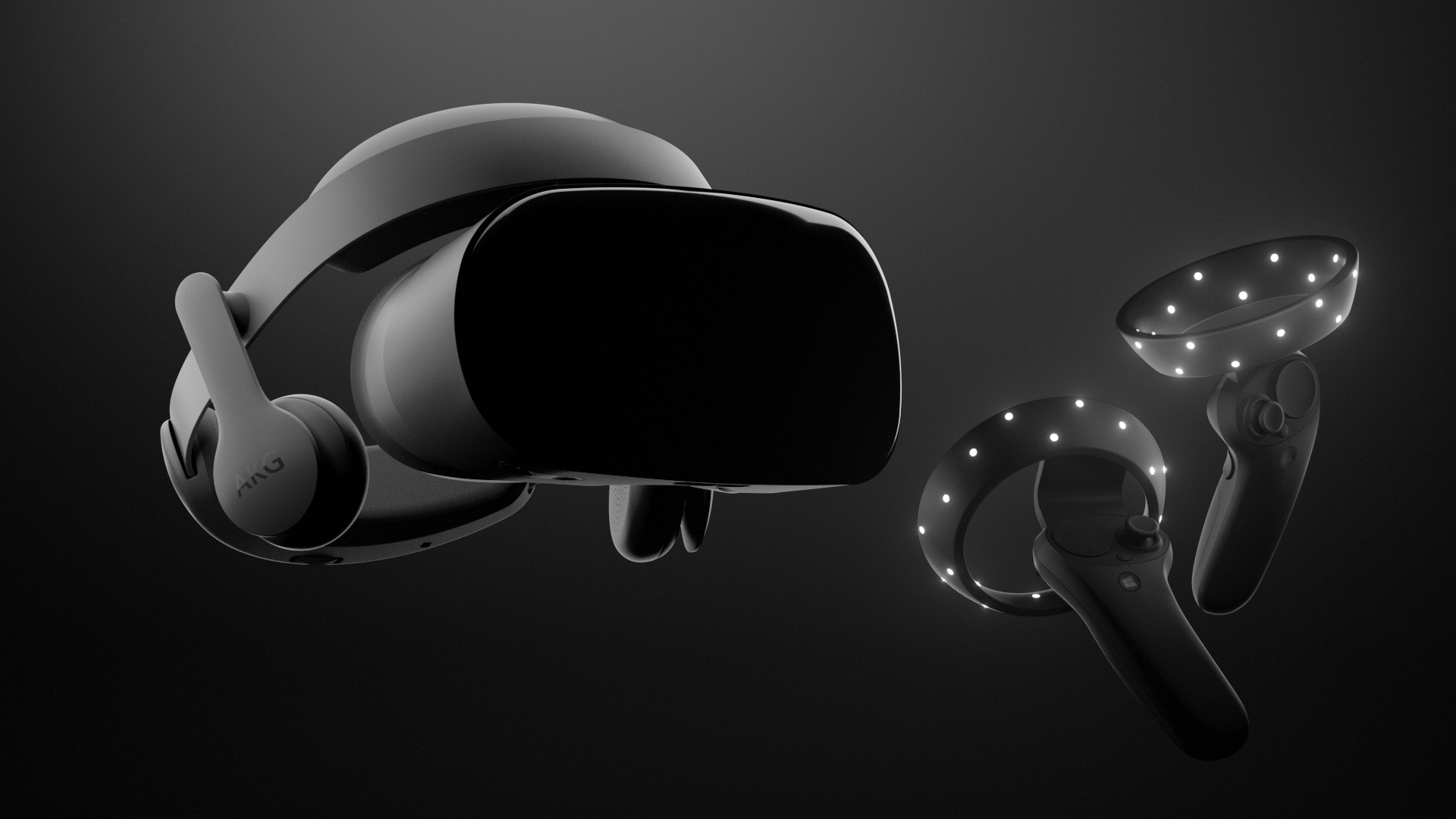Samsung HMD Odyssey brings spatial audio to Windows Mixed Reality
It costs $499 with controllers and ships November 6

Update: Microsoft and Samsung have just revealed that the HMD Odyssey will cost $499 (about £377, AU$638) with controllers included. Pre-orders will be available soon here, with orders shipping on November 6.
Original story follows...
Microsoft is on a mission to push through the next era of computing, what it calls 'Mixed Reality,' and it just brought on a big-name partner to help usher it in: Samsung.
Today, at a Windows Mixed Reality event in San Francisco, Microsoft's Alex Kipman unveiled the Samsung HMD Odyssey, a new head-mounted display that runs Windows 10 through a virtual environment. Samsung joins the likes of Acer, Asus, Dell, HP and Lenovo in creating a Windows Mixed Reality headset.
Designed and engineered in partnership with Microsoft, the Samsung HMD Odyssey features dual AMOLED displays, screen tech Samsung is known for in its Galaxy line of smartphones. According to Samsung, these displays offer the highest resolution in the industry.
Users will have a 110-degree field of view inside the Odyssey, which is on par with the Oculus Rift and HTC Vive virtual reality headsets.
The Samsung HMD Odyssey features built-in spatial AKG headphones, bringing high-end audio to the Windows Mixed Reality headset family. There's also inside-out tracking and a built-in microphone, which should add to the immersion, though we won't know just how well until we go hands on with the device.
Get daily insight, inspiration and deals in your inbox
Sign up for breaking news, reviews, opinion, top tech deals, and more.
Finally, the Samsung HMD Odyssey comes with Microsoft's motion controllers, which we've seen already in the likes of the Dell Visor Mixed Reality headset as well the Lenovo Explorer and Acer Mixed Reality Head-mounted Display.
Costing a cool $499 (about £377, AU$638) with controllers included, the Samsung HMD Odyssey will ship later than the other Windows Mixed Reality headsets, on November 6. You can pre-order Samsung's and all the other manufacturer's headsets starting today.
To justify that price, Samsung has equipped the HMD Odyssey with AMOLED displays at 1,440 x 1,600 resolution, which are a step above most other Mixed Reality headsets' in both screen tech and sharpness. Not to mention Samsung included AKG headphones that supply 360-degree spatial audio.
Everything else is par for the course for Windows Mixed Reality: a standard 90Hz refresh rate, a USB interface, two 6DOF cameras for position tracking and the ability to lift the display to see your natural environment without removing the HMD.
Perfect partners?
This isn't the first time Microsoft and Samsung have teamed up on hardware. Microsoft made a fittingly titled 'Microsoft Edition' of the Galaxy S8 and Galaxy S8 Plus, and Samsung released a Galaxy Book 2-in-1 laptop that ran Windows 10.
Samsung already has a virtual reality viewer in the Gear VR, which uses a mobile phone as the display. The Gear VR costs $129 (about £100, AU$117) .
Now, Samsung is spreading its virtual wings once again, releasing a Microsoft-backed virtual reality headset that requires a PC to run. It's a bold move in the sense that Samsung's HMD Odyssey could potentially cannibalize Gear VR sales, but Samsung seems keen to have a device for every corner of the virtual/mixed/augmented reality market.
Another point in the Odyssey's favor is that the Windows Mixed Reality headsets will eventually have access to the SteamVR catalog.
But, even sooner, beginning on October 17, users can also choose from the more than 20,000 apps on the Windows Store, including a mixed reality Halo experience. Finding content shouldn't be a problem, though again we'll have to go hands on to see how the quality stacks up to the likes of higher-end headsets. Stay tuned for our first impressions of the Samsung HMD Odyssey.
- Best VR headset: what's the right VR viewer for you?
Michelle was previously a news editor at TechRadar, leading consumer tech news and reviews. Michelle is now a Content Strategist at Facebook. A versatile, highly effective content writer and skilled editor with a keen eye for detail, Michelle is a collaborative problem solver and covered everything from smartwatches and microprocessors to VR and self-driving cars.
